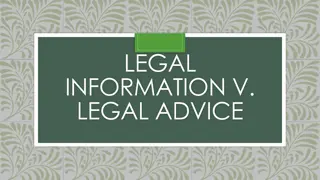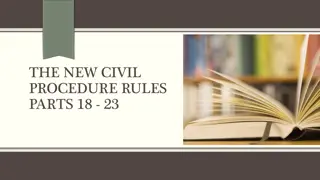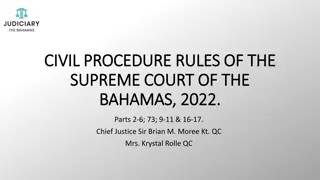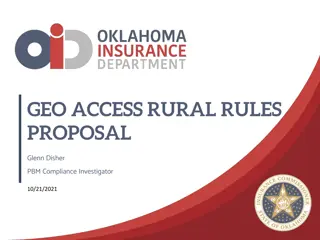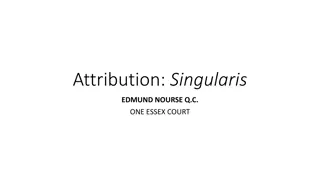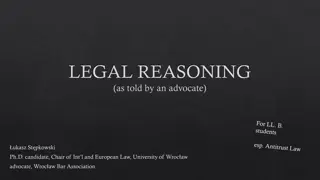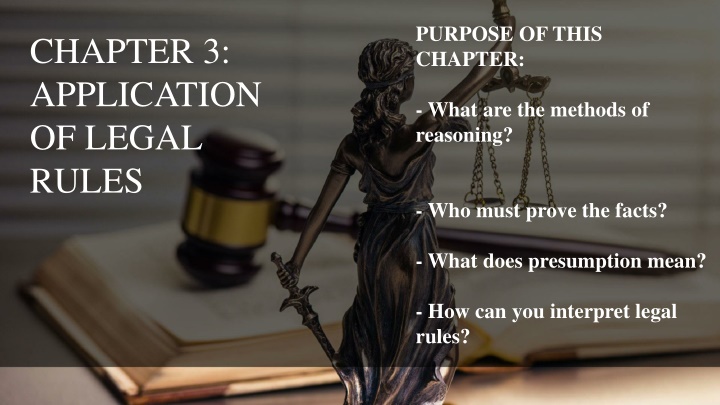
Methods of Reasoning and Burden of Proof in Legal Application
Learn about the methods of reasoning in the application of legal rules, understand who must prove the facts, grasp the concept of presumption, and explore how legal rules are interpreted. Dive into the process of ascertaining the applicable rules, determining facts, and applying relevant provisions of the law. Discover the burden of proof in both criminal and civil cases and the significance of presumptions in legal proceedings.
Download Presentation

Please find below an Image/Link to download the presentation.
The content on the website is provided AS IS for your information and personal use only. It may not be sold, licensed, or shared on other websites without obtaining consent from the author. If you encounter any issues during the download, it is possible that the publisher has removed the file from their server.
You are allowed to download the files provided on this website for personal or commercial use, subject to the condition that they are used lawfully. All files are the property of their respective owners.
The content on the website is provided AS IS for your information and personal use only. It may not be sold, licensed, or shared on other websites without obtaining consent from the author.
E N D
Presentation Transcript
PURPOSE OF THIS CHAPTER: CHAPTER 3: APPLICATION OF LEGAL RULES - What are the methods of reasoning? - Who must prove the facts? - What does presumption mean? - How can you interpret legal rules?
1. Application of Legal Rules Application entails the resolution of an actual conflict or controversy in light of these general abstract rules. This is a mental process that requires certain techniques and procedures.
1.1 Ascertaining the Applicable Rules The first stage is to ascertain the applicable general and abstract rule. Legal rules in force at a given time may be various forms such as laws, regulations, by- laws, customs, etc.
1.2 Determining Facts All legal cases must be based on certain facts. However, these are not needed to be proven : * Facts commonly known * Facts known to the organ ex officio * Facts acknowledged by the other party
1.3 Applying the Relevant Provisions of Rule The court reaches the legal conclusion by applying the relevant provisions of law and taking into consideration, arguments and counter-arguments made by the parties in the light of the relevant facts and legal rules. There are some methods employed by the court in reaching their judgment.
1.3.1 Syllogism 1.3.2 Argumentum a Contrario 1.3.3 Analogy (Argumentum a pari)
2.1 Burden of Proof The rule is very simple: The facts alleged should be proven. However, who will prove first the alleged facts?
2.1.1 Burden of Proof in Criminal Cases In criminal cases, all of the elements of crime with which the defendant is charged must be proven by the prosecutor. 2.1.2 Burden of Proof in Civil Cases The burden of proof may shift from one party to another and claims and counter claims may go back and forth between parties.
2.2 Presumptions Presumptions are very important because they are effective procedural devices for shifting the burden of proof.
2.2.1. Statutory Presumption 2.2.2. Rebuttable Presumption 2.2.3. Irrebuttable Presumption
3. INTERPRETATION OF LEGAL RULES
Before explaining the methods of interpretation, we need to answer this question: Why do we need to interpret legal rules?
3.1 Textual Interpretation 3.2. Historical Interpretation 3.3. Logical Interpretation 3.4. Teleological Interpretation 3.5. Unrestricted Interpretation


